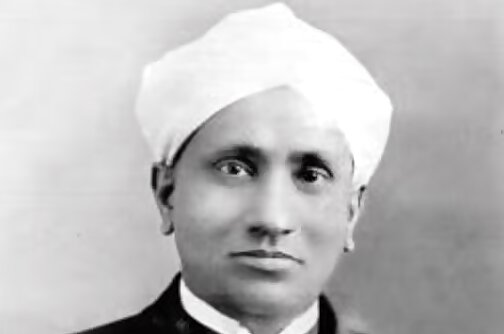
views
C.V. Raman or Sir Chandrasekhara Venkata Raman was an Indian physicist whose work was influential in the growth of science in India. He was the recipient of the Nobel Prize for Physics in 1930 for the discovery that when light traverses a transparent material, some of the light that is deflected changes in wavelength. This phenomenon is now called Raman scattering and is the result of the Raman effect, as per Britannica.
Raman joined the Indian government’s financial department after receiving a master’s degree in physics from Presidency College, University of Madras, in 1907. In 1917, he was appointed professor of physics at the University of Calcutta. In 1928, he discovered that when a transparent substance is irradiated by a beam of light of one frequency, a little amount of the light emerges at right angles to the initial direction, and some of this light has other frequencies than the incident light.
When Raman Became ‘Sir’
Raman was knighted in 1929, and in 1933 he became the director of the physics department at the Indian Institute of Science in Bangalore, the report says. In 1947, he was appointed director of the Raman Research Institute, and in 1961, he was elected to the Pontifical Academy of Science. In his period, he helped to establish practically every Indian research institution, founded the Indian Journal of Physics and the Indian Academy of Sciences, and trained hundreds of students who went on to prominent positions in colleges and government in India and Myanmar (Burma). He was the uncle of Subrahmanyan Chandrasekhar, who shared the Nobel Prize in Physics with William Fowler in 1983.

Science Day Celebrated After Him
Every year on February 28th, National Science Day commemorates the discovery of the ‘Raman Effect’ by him. Every year, it is observed to commemorate the importance of science and to remind us of the impact it has had on the lives of mankind. National Science Day is widely observed not just by Indians but also by people from other countries. In 2013, Google created a doodle of C.V. Raman to commemorate his 125th birthday.
The goal of National Science Day is to inspire and urge kids to pursue careers in science. Dr. CV Raman was a well-known scientist who was born in Tamil Nadu on November 7, 1888, and made numerous contributions to the field of science. “Global Science for Global Wellness” is the subject of National Science Day 2023. The subject reflects the country’s expanding global position and rising international exposure.
Some interesting Facts
C.V. Raman was the first Asian and non-White person to get a Nobel Prize in science, as per a report by RNB Global University.
Raman saw the blue tint of the glaciers and the Mediterranean when sailing to Europe in 1921. He was determined to find out why the sky was blue. Raman returned to India and conducted numerous tests on the dispersion of light from water and transparent slabs of ice. He established the scientific explanation for the blue hue of seawater and sky based on the findings.
Many people are unaware that Raman had a colleague in this experiment. Due to professional disputes, Raman’s coworker, K. S. Krishnan, did not share the Nobel Prize. Yet, in his Nobel acceptance speech, Raman emphasised Krishnan’s contributions.
The ‘Raman Effect’ is thought to be particularly important in determining the molecular structure of chemical compounds. About 2000 compounds’ structures had been investigated after a decade of discovery. The ‘Raman Effect’ has proven to be a very beneficial tool for scientists thanks to the invention of the laser.
It is astounding that Raman made this discovery with only Rs.200 in equipment, says the report.
Read all the Latest Explainers here




















Comments
0 comment